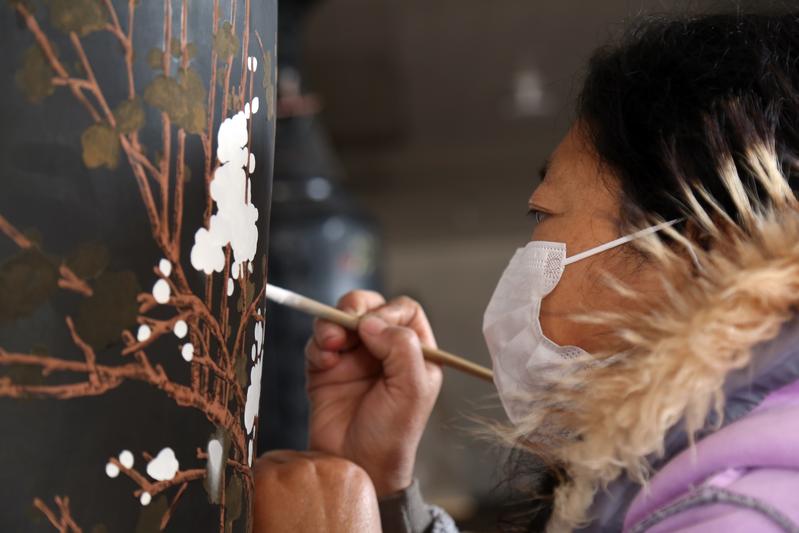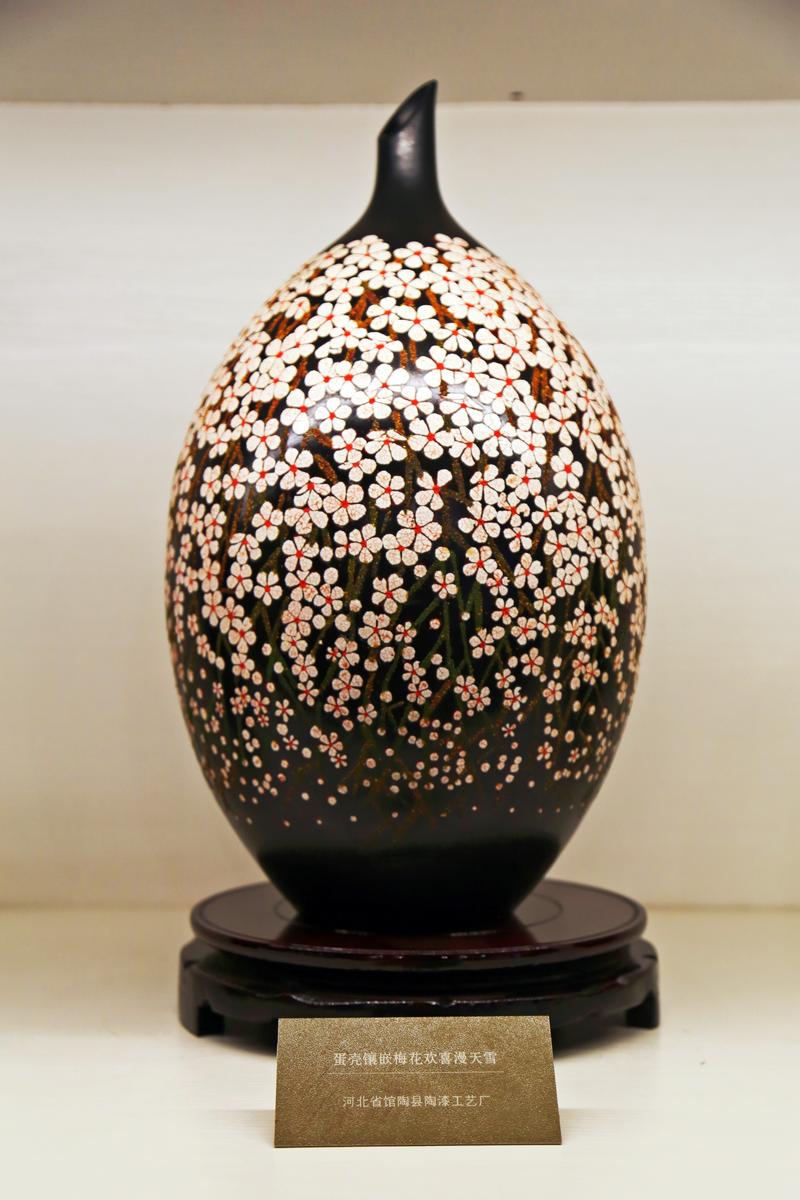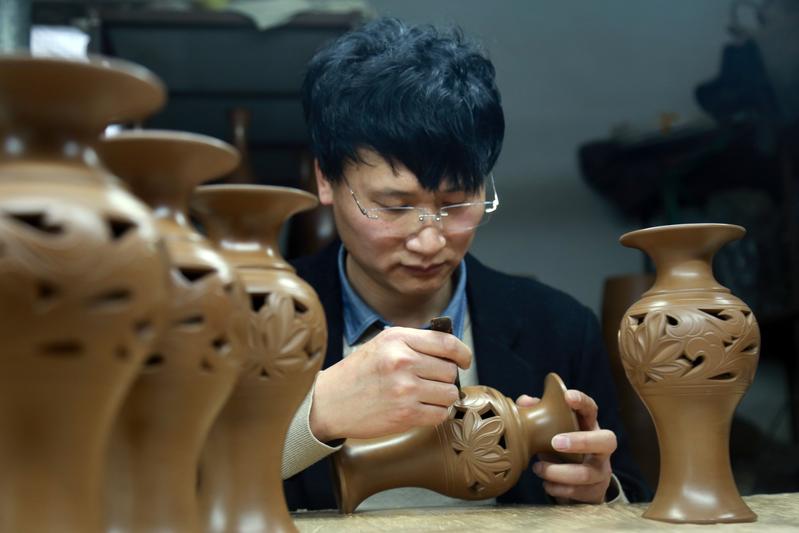Millennial tradition incorporates other techniques to meld history and innovation
 A worker paints a black pottery vase at a workshop in Guantao county, Hebei province. (GUO JIANGPENG / FOR CHINA DAILY)
A worker paints a black pottery vase at a workshop in Guantao county, Hebei province. (GUO JIANGPENG / FOR CHINA DAILY)
On a recent morning earlier this month, Jia Hongyun sat in front of a piece of black pottery, skillfully engraving a picture on it with a knife.
She was one of several women making pottery in the workshop in Guantao county, Hebei province.
Instead of being called a worker, the 41-year-old would rather be called an artisan, as she is involved in the craft of making pottery.
Jia has worked at a local pottery shop for just over 20 years. After starting out making simple ashtrays, she is now able to make anything customers require.
"Every day, I make things with my hands," she said, adding that she knows all the steps involved in making pottery, from jiggering and engraving to painting and manual calendering.
There are around 4,000 people like Jia in the county with the skill to make pottery.
Located about 400 kilometers southwest of downtown Beijing, Guantao is home to the country's black pottery trade, which dates back around 4,000 years.
Located in the lower reaches of the Yellow River in ancient times, Guantao occupies an ancient alluvial plain.
"The county thus has plenty of high-quality clay, which is the raw material for pottery," said Wang Hongbao, deputy head of the county's publicity department.
 A black pottery vase is on display in a showroom of a pottery shop in Guantao. (GUO JIANGPENG / FOR CHINA DAILY)
A black pottery vase is on display in a showroom of a pottery shop in Guantao. (GUO JIANGPENG / FOR CHINA DAILY)
He added that 70 Ming Dynasty (1368-1644) brick kilns have been found in the county, which produced not only colored bricks, but also pottery.
The tradition has been kept alive by local residents.
There are currently around 30 producers of pottery in Guantao who collectively make about 20 million yuan ($2.9 million) a year, Wang said.
Among those keeping the tradition alive is Wang Shaohong. From apprentice at age 20 to general manager of the Taoshan Black Pottery Company today, the 41-year-old has come a long way.
In addition to learning traditional black pottery making, he is now pursuing more practical uses for what historically has been a decorative art form. "I want to combine its artistic attributes with practical use," Wang said.
After years of effort, he has created a series of objects designed to purify the air.
"These pieces release negative oxygen ions, freshening the air," he said, adding that the pottery can also be used as decoration to embellish the home.
He has registered six patents in related fields as a result of his endeavors.
Wang's new items are just a drop in the bucket of pottery available in Guantao.
 Wang Shaohong works on a black pottery piece in his workshop. (GUO JIANGPENG / FOR CHINA DAILY)
Wang Shaohong works on a black pottery piece in his workshop. (GUO JIANGPENG / FOR CHINA DAILY)
According to Wang Hongbao, thanks to innovation, more than 1,000 different kinds of pottery are now made in Guantao, involving different techniques such as hollowing out, embossing, lacquering, painting and inlay.
The items are sold domestically and abroad, including in Southeast Asia and Europe, Wang added.
"The innovation in pottery making and combining it with other techniques such as lacquering shines new light on the art, offering a blend of both history and modernity," said Yin Junting, a senior representative of Guantao pottery inheritors.
The 66-year-old craftsman is the only person in China to have been named a national master of Chinese arts in the field of black pottery.
One of his most important achievements was perfecting the combination of black pottery with lacquering, which gave the pieces new colors.
He began learning how to make black pottery in 1985.
"At first, I just tried it out. Afterward, the more pottery I made, the more I appreciated its culture, which made me more interested in it," Yin said.
To introduce the pottery to more people, Yin has offered classes to pass on his skills.
He also set up a company that not only produces pottery, but also provides a tourist experience.
"This way, more people get to know and appreciate pottery culture," he said.


